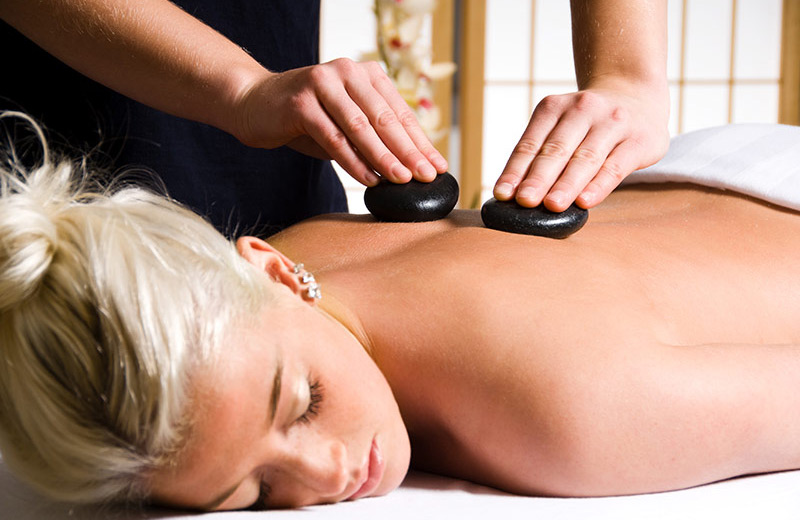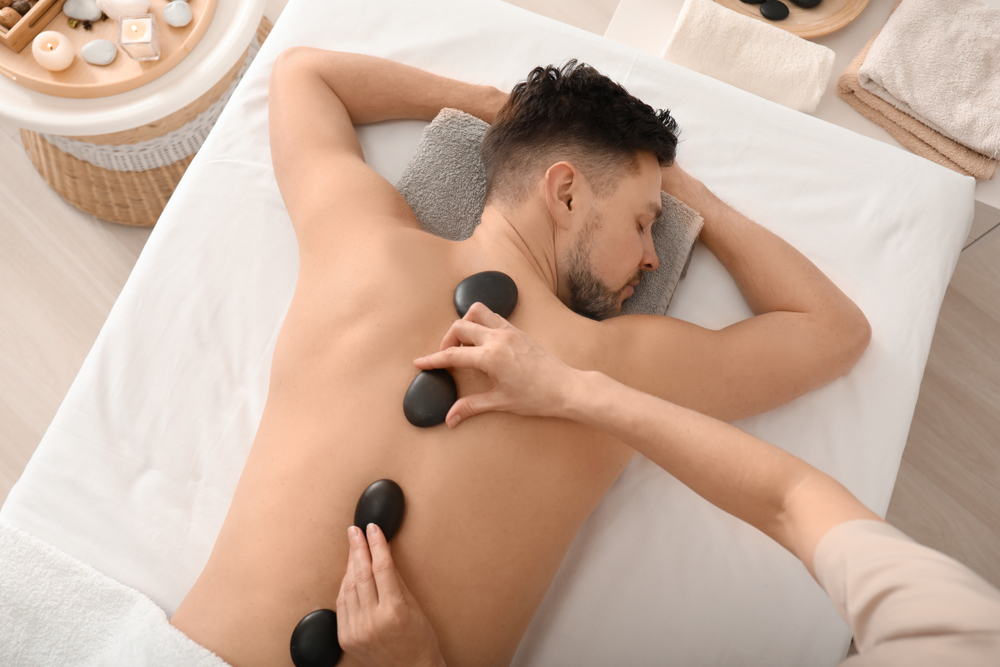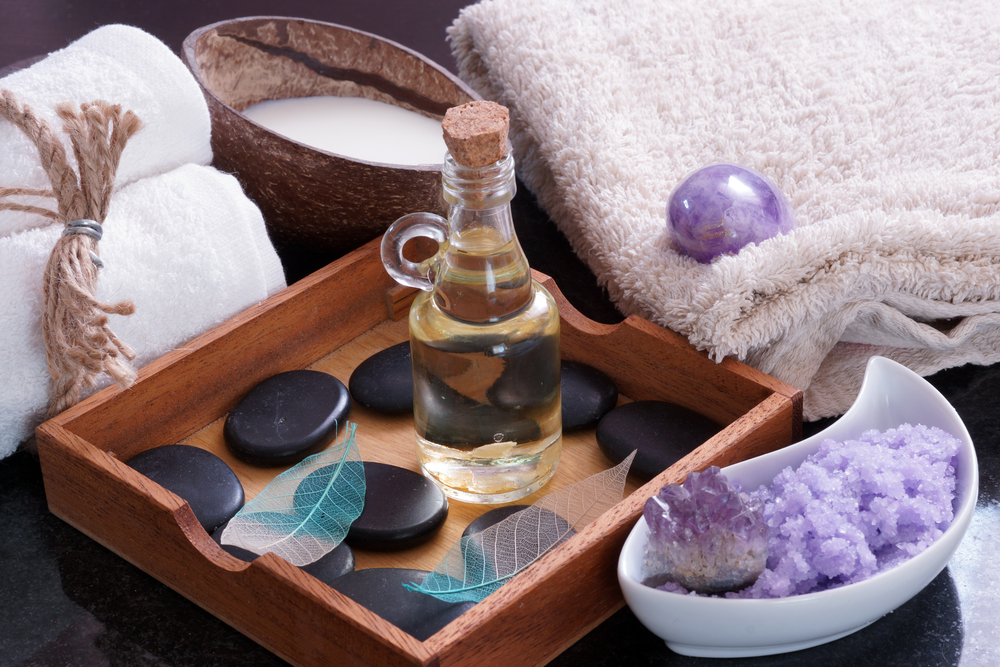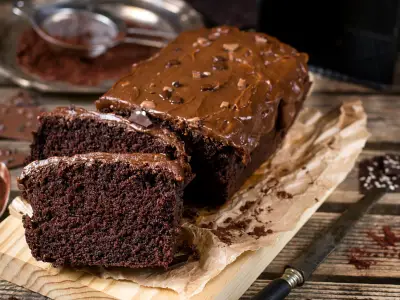Hot stone massages have been around for many centuries and are used as an alternative form of psychological and physical therapy and healing. The practice of placing objects of varying temperatures onto the body is present in many cultures, perhaps most famously in Hawaiian and even ancient Chinese customs.

In this article, we explore the various methods of hot stone massage that have developed over the years, and uncover some of its main benefits and why it has become a popular form of massage therapy.
What is a Hot Stone Massage?
Hot stone massage therapy is a form of massage that is used to relieve stress, ease muscle tension and improve overall well being. This massage technique involves the use of smooth, heated stones (usually basalt stones) at an approximate temperature of 54 degrees celsius (130 degrees fahrenheit). These are placed onto specific points on the body. They can be situated in most places, but the common areas are along the spine, on the palms of the hands, on the chest and even on the face! As it is a massage, the warm stones act as an extension of the therapist's hands, allowing them to use the heat of the stones to soothe the sore muscles and effectively release tension.
Over time, many variations and different techniques have been created, with the most common evolutions being the Swedish hot stone massage, deep tissue hot stone massage, hot stone reflexology, and hot stone therapy for relaxation.
Each technique utilises hot stones in different ways to achieve different therapeutic effects. Approaches also vary in terms of the pressure that’s applied and the types of strokes that are used. Depending on the technique, the massage therapist may use hot stones in a tapping motion, circular movements, long strokes against the body, or even knead the muscles with them. Some massages may focus more on relaxation and stress relief, while others may be more focused on relieving pain and tension in specific areas of the body.
Depending on your personal needs and preferences, an experienced massage therapist will be able to recommend the best hot stone massage type for you.
Benefits of a Hot Stone Massage

As it’s been around for hundreds of years, it's hard to deny that there are benefits to a hot stone massage. In fact, many studies have shown that there is definitely a benefit in both a physical and psychological sense.
The most common benefits of a hot stone massage include:
- Comfort and relaxation: This is a main benefit for almost all massage types. Combined with the movements being performed by the therapist, the heat from the basalt stones can almost instantly make your body and mind feel more at ease.
- Pain relief: This type of massage is known to ease pain in the muscles and joints, and heat is a mainstay for relieving muscle tension. As the hot stones are placed on the body, the heat promotes blood flow to those areas, allowing the joints to soften up and relaxing the muscles that are causing the pain.
- Improved circulation: Therapeutic massages are usually great for circulation, and a hot stone massage is no exception! The warm temperatures of the stones allow blood and oxygen to flow more freely through the bloodstream by expanding the blood vessels. This naturally improves circulation.
- Stress relief: During a hot stone massage, various ‘feel-good’ hormones and endorphins are released, and certain stress-related hormones like adrenaline and norepinephrine are decreased. It also very slightly lowers the heart rate and ultimately calms the central nervous system.
- Better sleep: As you enter a deep relaxation mode, feelings of anxiety melt away, allowing your mind and body to rest. Melatonin production is also increased during a hot stone massage. This natural hormone is connected to your internal clock and is needed to manage your sleep cycle.
“Disadvantages” of a Hot Stone Massage
There aren’t any particular disadvantages to having a Hot Stone massage, but individuals who suffer from certain medical conditions (such as high blood pressure, heart disease or diabetes) are advised to consult with their doctor/a medical professional before trying one.
Any other potential “disadvantages” of hot stone massages, or reservations about the heat of the stones, tend to vanish when you’re dealing with an experienced practitioner, though it’s also wise to keep in mind the following:
- Allergic reactions: It’s advised that you disclose any known allergies to a massage therapist beforehand, as various types of oils are used during this massage.
- Skin sensitivity: If you have very sensitive skin, or suffer from certain dermatological conditions such as eczema or psoriasis, be sure to let your massage therapist know!
- Possible discomfort: Although it’s designed to relax the body, the sensation of hot stones sitting on your back or legs may not be to your liking!
- Cost: Hot stone massages are luxury massages, and are generally more expensive than other types of massage.
If you’re at all unsure whether a hot stone massage would benefit you, or you have any concerns, then be sure to consult with your doctor or healthcare professional beforehand.
Cleaning Hot Stone Massage Rocks

Practitioners clean their hot stones with hot, soapy water and antibacterial cleanser, and will then thoroughly dry them. The drying step sanitises the stones and keeps them free from bacteria and viruses. In addition, the water in the heating unit is changed after each use, and the stones are often re-charged to rid them of any negative energy they may have absorbed. This latter cleansing technique may include leaving the stones in sunlight, moonlight, or even feature Reiki methods. It’s believed that re-charged stones will hold the heat more effectively!
Tips to Help you Prepare for a Hot Stone Massage
To ensure a relaxing and rejuvenating hot stone massage experience, it’s always helpful to properly prepare beforehand. Here are some tips to help you get ready:
- Hydrate: Drinking plenty of water before your massage can help to hydrate your muscles and assist with the removal of toxins in the body. Don’t fill yourself up too much, as you ideally don’t want to interrupt your zen massage for a bathroom break!
- Eat Light: A heavy meal before your massage could make you feel bloated and sluggish. As a result, we recommend that you only eat a light meal or a snack: preferably something like fruits or dried fruit and nuts.
- Communicate With Your Therapist: Be sure to let your massage therapist know if you have any medical conditions, allergies or sensitive areas. They’ll be able to tailor the massage to your needs and preferences, ensuring a safe and comfortable experience.
- Relax: Prepare your body and mind for deep relaxation and let go of any stress and tension as you head in for your massage. Your experience will be much improved!
What to Wear to a Hot Stone Massage?
It’s recommended to dress in a way that allows easy access to the particular areas of the body that are being massaged. For example, most people would opt for comfortable, loose-fitting clothing such as a t-shirt or shorts. You may also be asked to undress to your level of comfort and will be covered with either a sheet or a blanket during the massage. Removing jewellery and tying back long hair is also advised, to avoid them getting in the way.
How Long is a Hot Stone Massage?
A Hot Stone massage usually lasts between 60 and 90 minutes. However, depending on your individual needs, they can be shorter or run longer. If you’re looking for a “quick” massage, some spas and massage therapists do offer 30 minute sessions.
It is always best to discuss the ideal length of your hot stone massage with your therapist before the appointment, as they’ll be able to recommend the most beneficial treatment.
Summary
While it’s important to be aware of the potential risks and limitations, a hot stone massage can be a highly effective form of therapy, and similar techniques have been helping people for many years. It’s definitely worth looking into if you wish to relieve some muscle tension, or if you simply want to enjoy a unique massage.
If you’d like to learn more, our Hot Stone Massage Diploma and Hot Stone Reflexology Diploma courses are available for just £29 each for a limited time (reduced from £127 each). These courses are also ideal if you’re a massage therapist who’s looking to add these techniques to your toolkit, or if you’re a newcomer who’s interested in studying hot stone massage to start a brand new business. Both courses provide the theoretical and practical knowledge required to add hot stone massage to your massage portfolio.





